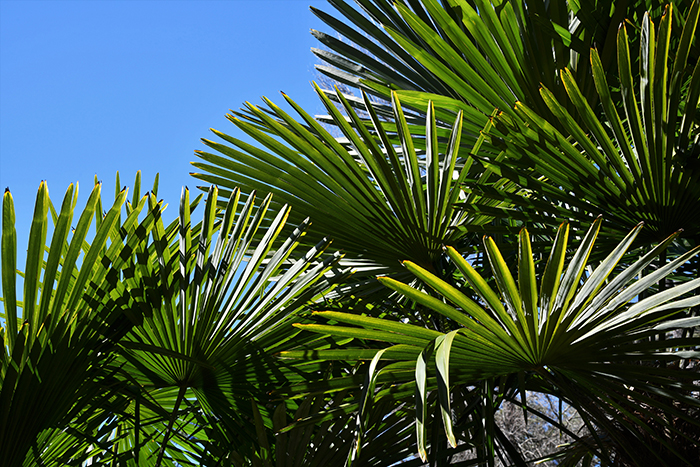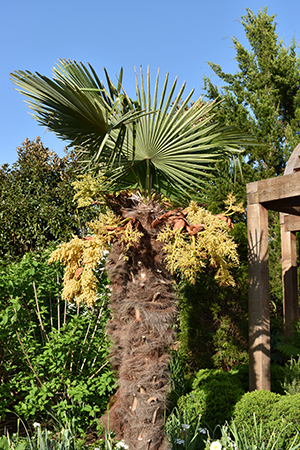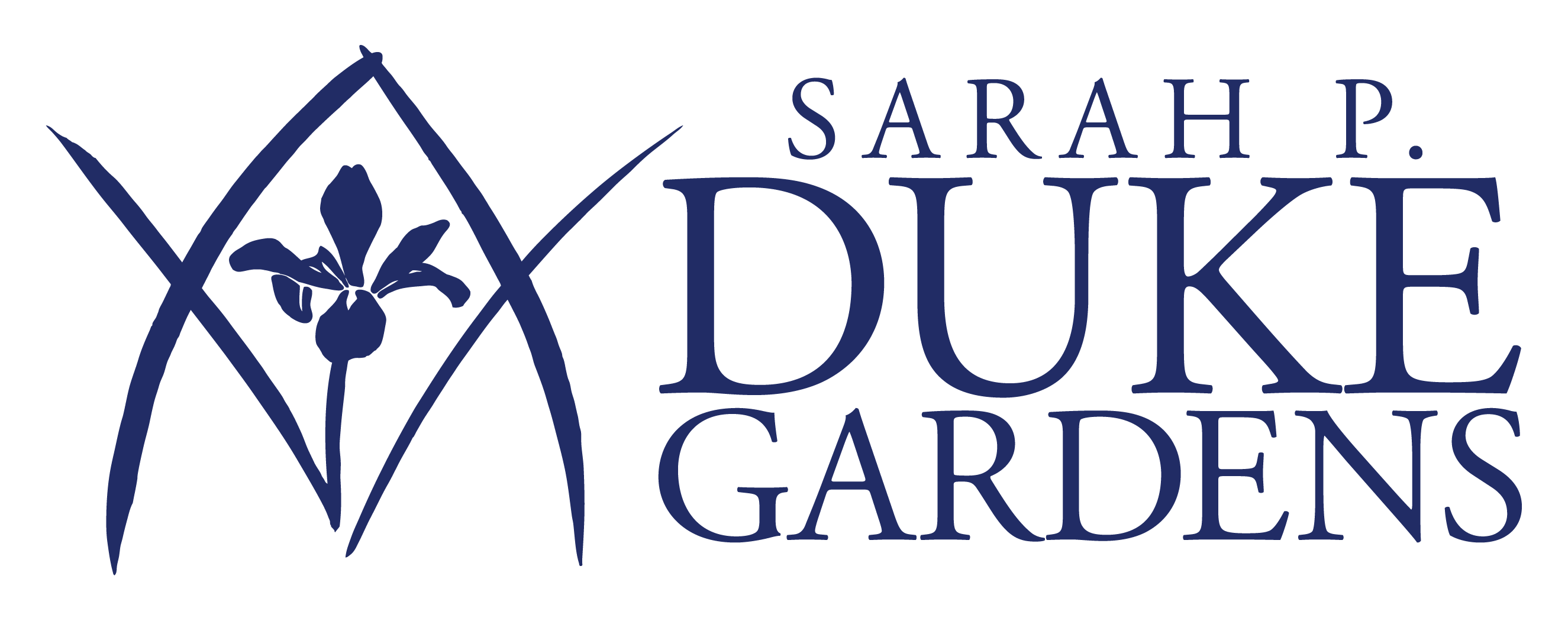
Windmill palm leaves in the Page-Rollins White Garden, by William Hanley.
Botanical name: Trachycarpus fortunei
Common name: Chinese windmill palm
Family name: Arecaceae (Palm Family)
Native range: Eastern China and northern India
Location in Duke Gardens: Doris Duke Center Gardens
USDA Hardiness Zones: 7-11
The word “palm” usually conjures up visions of tropical beaches or rainforests, but a surprising number of these plants are capable of surviving hard freezes and even snow without artificial protection. Most of the cold hardy palms that do well in our area are those with fan-shaped leaves, as opposed to pinnate-leaved palms like coconut (Cocos nucifera) or oil palms (Elaeis spp.). Of this select group of cold hardy species, the Chinese windmill palm (Trachycarpus fortunei) is the best known and most widely grown, thanks to its tolerance of temperatures as low as minus 10 degrees Fahrenheit, making it one of the hardiest palms in the world.
The reason for such impressive tolerance becomes clear after one studies a map of its distribution, which includes the mountains of eastern China and northern India at altitudes up to 7,000 feet. The exact boundaries of its original range are difficult to determine because the plant has been widely cultivated across Asia as a fiber crop for rope and coarse fabric. However, in the West, it is grown primarily as an ornamental plant by adventurous gardeners, and it adds a tropical-looking flair to temperate gardens as far north as New York and Connecticut.
Unlike many other species of cold hardy palms, including the native needle palm (Rhapidophyllum hystrix) in the Historic Gardens and dwarf palmetto (Sabal minor) in the Blomquist Garden of Native Plants, Chinese windmill palm forms a tree-like trunk that can grow up to 60 feet in height in ideal conditions. However, the trunk has no true “wood” inside it; unlike trees, the width of this palm’s stem usually does not expand as the palm ages, and the stem doesn’t form annual tree rings. Chinese windmill palm is also closely related to the Kumaon palm (T. takil), a native of the Himalayan foothills, one of which is planted in the Culberson Asiatic Arboretum near the Maple Gate entrance.
The Doris Duke Center Gardens contain several Chinese windmill palms, which provide year-round interest in the Page-Rollins White Garden, thanks to their large, textured leaves, which spiral outward from the top like the blades of a windmill. They are sometimes confused with the unrelated evergreen beaked yucca (Yucca rostrata) nearby, which also forms a shaggy palm-like trunk but is shorter, with sharp, needle-like blue-green leaves. Another windmill palm stands in the raised bed directly in front of the Doris Duke Center.

Profile of a windmill palm in flower, by Kathy Julian.
